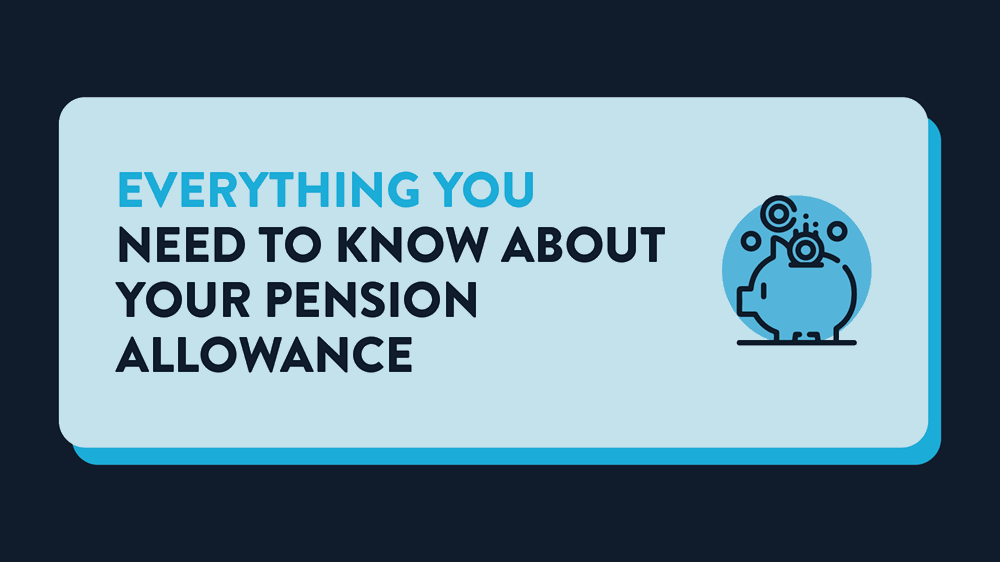If you want to get the most out of your pension, understanding your pension allowance (especially your pension allowance for 2025/26) is generally a good starting point.
And, with the government announcing changes at the start of the 2024/25 tax year – such as abolishing the lifetime allowance in favour of three new allowances – getting up to speed with all things pension allowance and pension contribution is more important than ever.
We’ll talk more about those changes later on, but let’s start with the pension allowance basics, shall we?
What is pension allowance?
In simple terms, your pension allowance (also known as your pension contribution limit) refers to the amount you can pay into a pension without having to pay any tax.
Pension allowance includes all your contributions, the tax relief on it, and any employer contributions across all of your pensions.
What is the pension annual allowance for 2025/26?
The pension annual allowance for 2025/26 currently stands at £60,000, or up to 100% of your income – whichever is lower – and resets at the start of every new tax year.
This hasn’t always been the case though, with the pension allowance going through the following historic changes [1]:
Despite the current £60,000 figure, it’s important to understand that pension allowance is also dictated by salary.
For example, if you have an income of over £260,000 (as of the 2025/26 tax year), then your annual allowance for that tax year will reduce. This reduction is called an ‘adjusted income limit’, meaning for every £2 you earn above £260,000, your annual pension contribution allowance will reduce by £1.
This stops at £360,000, at which point you’ll retain an allowance of at least £10,000. This is called a ‘tapered annual allowance’ [2], which you can find out more about on the MoneyHelper website.
There also used to be something called the pension Lifetime Allowance, which was scrapped from April 6th 2024 [3]. Lifetime Allowance (LTA) was the maximum amount you could have saved in your pensions without having to pay extra tax on the money; at the time of abolition, that number stood at £1,073,100.
Even though the LTA is no longer applicable to your pension annual allowance for 2025/26 (and beyond), it was replaced by three new allowances:
- Individual Lump Sum Allowance (LSA)
- Lump Sum and Death Benefit Allowance (LSDBA)
- Overseas Transfer Allowance (OTA)
We’re going to go into a little more detail about each one below.
Individual Lump Sum Allowance
In simple terms, the new LSA is the maximum amount of money you can take from registered pension schemes as your 25% tax-free lump sum.
For the majority of people, that allowance stands at £268,275 — although it could be higher if you have a previous protected LTA.
And, every time you take a tax-free lump sum from your benefits or savings, you use some of your LSA.
Lump Sum and Death Benefit Allowance
Whereas the LSA refers to lump sums paid during your lifetime, the LSDBA refers to certain death benefits paid on death before the age of 75, as well serious ill-health lump sums received before the same age.
The standard LSDBA is £1,073,100 (the same amount as the final LTA before it was scrapped).
Overseas Transfer Allowance
The Overseas Transfer Allowance (OTA) refers to funds transferred from a registered pension scheme in the UK, to a Qualified Recognised Overseas Pension Scheme (QROPS) abroad without tax charges being applied.
It’s worth noting that the government has removed the exclusion of the European Economic Area (EEA) and Gibraltar from this — as some individuals were experiencing a ‘double tax-free allowance' before this change. Transfers to these areas now matches the rest of the world’s treatment since October 30th 2024 and those transfers would now incur a 25% charge unless specific conditions are met [4].
Like the LSDBA, the OTA is also set at £1,073,100. If an overseas transfer goes over your allowance amount, then tax charges will apply.
As of April 6th 2024, any transfers made to a QROPS will be tested against your OTA, as opposed to what was your LTA.
What happens if you go over your pension allowance?
If your pension contributions exceed your annual pension allowance, then you may need to pay tax on any amount above the limit. However, you might be able to carry over any unused pension allowance from the previous three tax years.
In cases where you aren’t able to carry forward your unused pension allowance, you’ll be subject to an annual allowance change. You can find out if you’ll have a charge on your pensions by using the HMRC annual pension allowance calculator.
Depending on your pension scheme – and how much the tax charge is – either you or your pension provider will pay this charge. It’s worth noting that if your scheme provider does pay the charge, then they may also reduce the benefits you receive to correspond.
You can find out more about paying annual pension allowance charges on the government website.
Can I use previous years’ pension allowance?
Some providers do let you carry your pension allowance forward from the previous three tax years (although you’ll need to use allowance from the earliest year first).
For example, if you were eligible for the full pension allowance but only saved £20,000 for the 2022/23 and 2023/24 tax years, you’d be able to carry forward the £40,000 of unused allowance — in addition to the £60,000 allowance for the 2024/25 tax year.
If you didn’t know about this carryover, you might want to consider it when thinking about your pension annual allowance for 2025/26.
One thing to note, however, is that if you’ve got the tapered annual allowance we mentioned earlier, then you’ll need to weigh up any unused allowance against your reduced allowance for each year (and that may chance based on your adjusted income).
Does accessing your pension reduce the annual allowance?
In a word, yes. If you’re already accessing the money in your pension – often referred to as drawdown – then you’ll have a lower pension allowance. In this situation, your allowance may drop to £10,000 a year, as a result of something called the Money Purchase Annual Allowance (MPAA).
If you’ve got a defined benefit pension (also known as a ‘final salary’ pension) that’s still getting benefits, then you may have an alternative allowance of up to £50,000 (your £60,000 annual pension allowance, minus the £10,000 MPAA).
Pension annual allowance calculator
If you’ve found this blog useful and want to take things a step further, it could be worth using the government’s pension allowance calculator. As well as helping you check if you have any unused pension allowance, this nifty little tool also tells you whether you’ve got any unused allowance to carry forward.
If you want to learn more about investing for retirement with Wealthify, check out our Self-Invested Personal Pension page.
With investing, your capital is at risk. Please remember the value of your investments can go down as well as up, and you could get back less than invested.
The tax treatment depends on your individual circumstances and may be subject to change in the future.
Wealthify does not provide financial advice. Please seek financial advice if you are unsure about investing.
References:
2: https://www.moneyhelper.org.uk/en/pensions-and-retirement/tax-and-pensions/tapered-annual-allowance
3: https://www.gov.uk/guidance/find-out-the-rules-around-individual-lump-sum-allowances



